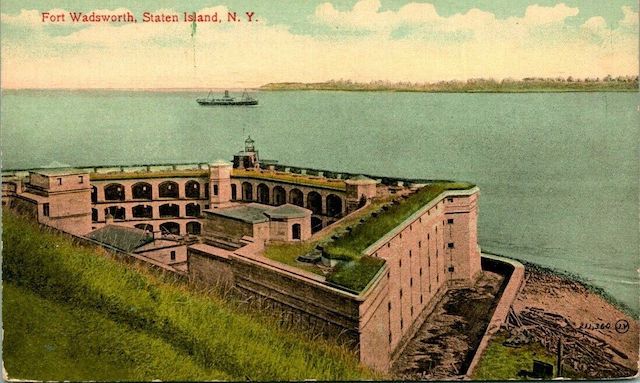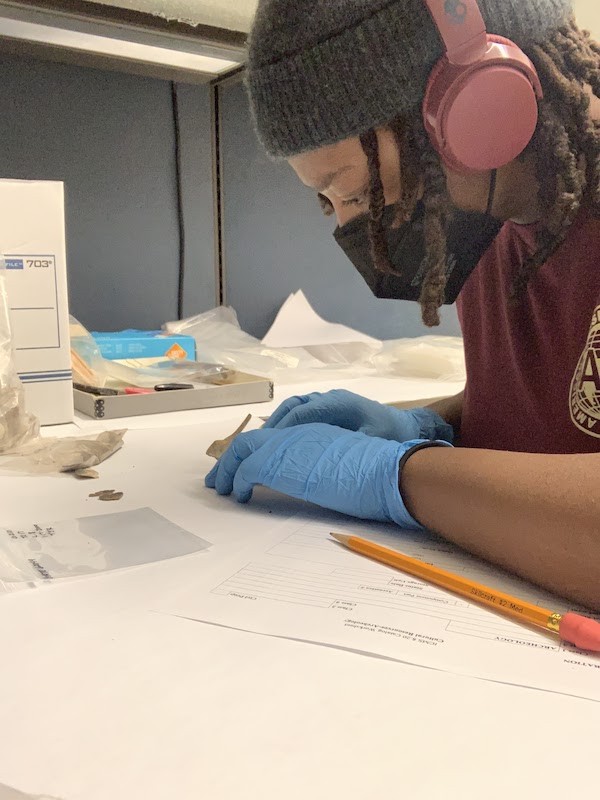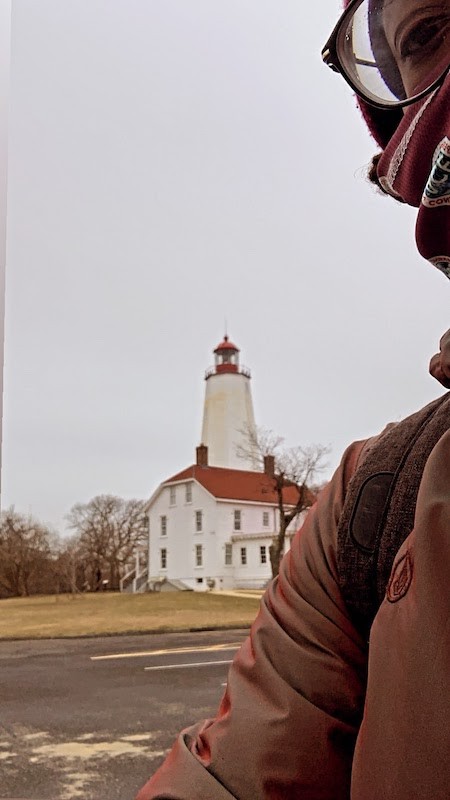Military Mystery at Gateway National Recreation Area: History, Archeology & Collections Management
Written by: Loissa Harrison-Parks
My name is Loissa Harrison-Parks and I am an Archeological Technician for Gateway National Recreation Area. Although this is not my first time doing archeological work, it is my first time conducting archaeology in the city of New York!
My archeological career began summer 2016 as an Undergraduate at Central Michigan University. Through the University, I served as an Archeological Assistant for the Najerilla River Valley Project in Nájera, Spain. For 5 months, I conducted archeological research to investigate the cultural sequence in the valley, using Global Satellite Systems and Ground Penetrating Radar to locate and mark important structures found during field studies. I also used the most up-to-date computer software to photograph, categorize and label important landmarks and artifacts.
In a way, my new position at Gateway felt like fate. A good friend of mine was a Park Ranger living and working at Fort Tilden a few summers ago. We spent a lot of time hiking, birding, swimming and exploring at the park’s coast. By the fall, I felt like I had a pretty good understanding of the park’s history as well as the military importance Tilden held in regards to the city and harbor. However, once my internship began, my knowledge of Gateway National Recreation Area expanded ten-fold.
During my first week of my internship, I learned that Gateway Recreation Area comprises three major parks. The first park, aka the Park Headquarters and my office is located at Fort Wadsworth, in Staten Island. Built in the 1840s, Fort Wadsworth served as one of the major defense strongholds against British forces. The fort’s main function was to protect the narrows and New York harbor, which at the time, represented over 90% of the country’s imported goods.

Staten Island Postcards Fort Wadsworth, Staten Island (New York, NY).
I spent the majority of my first day touring the fort and reading past archeological reports. I attended my first National Park telemeeting and learned of the new protocol regarding COVID-19 and park visitation. Finally, I got a chance to see some of the park’s collection storage, as well as, a slight debrief of how the collections are maintained and organized.
What surprised me most about the park is how expansive it is. I knew that it was composed of a handful of parks and wildlife refuges, but I didn’t realize it stretched over 27,000 acres! The amount of prehistoric, paleo-Indian and post-contact is unimaginable!
After a general overview of the park and its collections, I finally got a chance to begin the process of cataloging artifacts. Before I dove right in, I needed to get acquainted with the National Park System’s Interior Collections Management System (ICMS). The database was designed to accession and catalog Department of Interior museum collections. The system also has other functions like conservation, inventory and collections usage. Once I got a good handle on the database methodologies, I was ready to start pulling boxes and actually organizing the artifacts!

The archeological aspect of my internship really takes form at Gateway’s Sandy Hook location. Sandy Hook has to be one of the most fascinating parks I’ve ever been to in regards to America’s Military History. Not only does the park contain the country’s oldest functioning lighthouse (dating back to 1776), it is also culturally significant in regards to America’s Revolutionary, Civil and World War history.
Geologically speaking, Sandy Hook is a spit of land situated in Middleton Township, just northeast of Monmouth County, New Jersey. The hook is 5.2 miles long and lays east by the Atlantic Ocean, extending into New York Harbor. Similarly to Fort Wadsworth, Sandy Hook is a prime defense location when considering maritime navigation into the city. For much of its history, Sandy Hook was solely occupied by US Military Forces. The federal government completed purchase of the entire peninsula in 1814, and it wasn’t until 1982, that Sandy Hook peninsula was designated as the Fort Hancock and Sandy Hook Proving Ground National Historic Landmark. Since then the area has shifted its function from military stronghold to a recreation area used for fishing, hiking, boating and other sport and leisure activities.

Much like my first day at Fort Wadsworth, I spent my first day at Sandy Hook touring the grounds with my mentor and Park Archeologist, Holly Staggs. First, we stopped by Park Headquarters then proceeded to visit the Sandy Hook Lighthouse, Proving Grounds, Fort Handcock and various batteries. The tour, which covered roughly 4 miles, provided visual and contextual insight into all of the reading done prior to the trip. I also learned how to fill out a Site Condition Assessment Form and properly record any area recommended for archeological survey.
All of this park overview and collections management comes together when conducting actual archeological field work. For the next 5 or 6 weeks, Holly, a team from Monmouth University and myself will be working at Sandy Hook, as a part of an undisclosed project. Without giving too much away (trust me it’s hard because this project is really cool), we are working to better understand Sandy Hook’s role during the Revolutionary period.
Saturday was our first time meeting up and getting a general layout of the area. After we got a chance to set our things down, we were debriefed on the area, as well as given general instructions on how to conduct a shovel test. We spent the entire day looking for surface artifacts and conduction shovel tests. I was pleasantly surprised with how beautiful the weather was.
Sandy Hook curves up and over into New York Harbor, so on a good day you can see both Manhattan and Brooklyn just over the horizon. There was a calm wind, constant sunshine and most importantly a calm, low tide as we worked through the day.
All in all, these first few weeks at Gateway have been a dream! I’m enjoying the hands-on experience I’ve gained in collections management and archeology, but coupled with the opportunity to conduct actual fieldwork, life couldn’t get any better!
